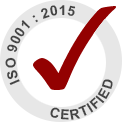NPD NEGATIVE PHOTORESIST DEVELOPERS
DESCRIPTION:
Transene NPD Negative Photoresist Developers are high purity organic solutions for developing exposed negative photoresist.
A broad range of proprietary blends of solvent developers are offered for various negative photoresists. They are formulated to complement the resist system being used. The developers are selected based upon the activity levels required for specific processing conditions. All negative working developing chemicals are sold as working solutions.
PROPERTIES:
| Product | Xylene: Stoddard Solvent Ratio |
| NPD 4001 | NA |
| NPD 4030 | 0:100 |
| NPD 4032 | 100:0 |
| NPD 4033 | 1:2 |
| NPD 4040 | NA |
| NPD 4050 | 1:1 |
| PKP II Developer | NA |
DEVELOPMENT:
During the development cycle, the unexposed photoresist is removed by a developer/rinse system, spray or immersion, leaving the substrate protected according to the exposed image. To obtain very fine line resolution, it is recommended that spray development be used. Immersion development is adequate for less critical geometries, i.e.7µ or greater line widths and spacings, especially if mechanical or nitrogen bubbling is used. A typical spray cycle and immersion cycle are shown in the tables below.
TYPICAL SPRAY CYCLE:
| Solution | Time (seconds) |
| Developer; Xylene; Stoddard Solvent | 10 to 15 |
| Rinse; n-Butyl Acetate | 10 to 15 |
| Nitrogen Dry | 15 to 20 |
TYPICAL IMMERSION DEVELOP CYCLE:
| Solution | Time (seconds) |
| Developer; Xylene; Stoddard Solvent | 60 to 75 |
| Rinse; n-Butyl Acetate | 20 to 30 |
| Nitrogen Dry | 15 to 20 |
HARD BAKE (PRE-ETCH):
During hard bake the developing solvents are removed and strengthening of the adhesion between the resist and substrate is accomplished at a bake temperature of 140° ± 5°C for 25 ± 5 minutes in a convection oven. During infra-red baking, the temperature at the surface of the water should be maintained at 140° ±5°C. It should be noted that infra-red energies affect different substrates with a varying degree of temperature. A maximum elapsed time of four (4) hours between hard bake and etch is recommended.
ETCHING:
Photoresists are compatible with both acid and alkaline metal etchants and buffered hydrofluoric acid. The etch rate is determined by temperature, agitation, and mixture of etch. Due to the proprietary nature of different etches used in the semiconductor industry, it is not possible to describe all the different effects on photoresist.
REMOVAL:
Photoresist can be removed in any common conventional chemical system. A number of removal solutions are commercially available; some require heating, and some manual scrubbing.

